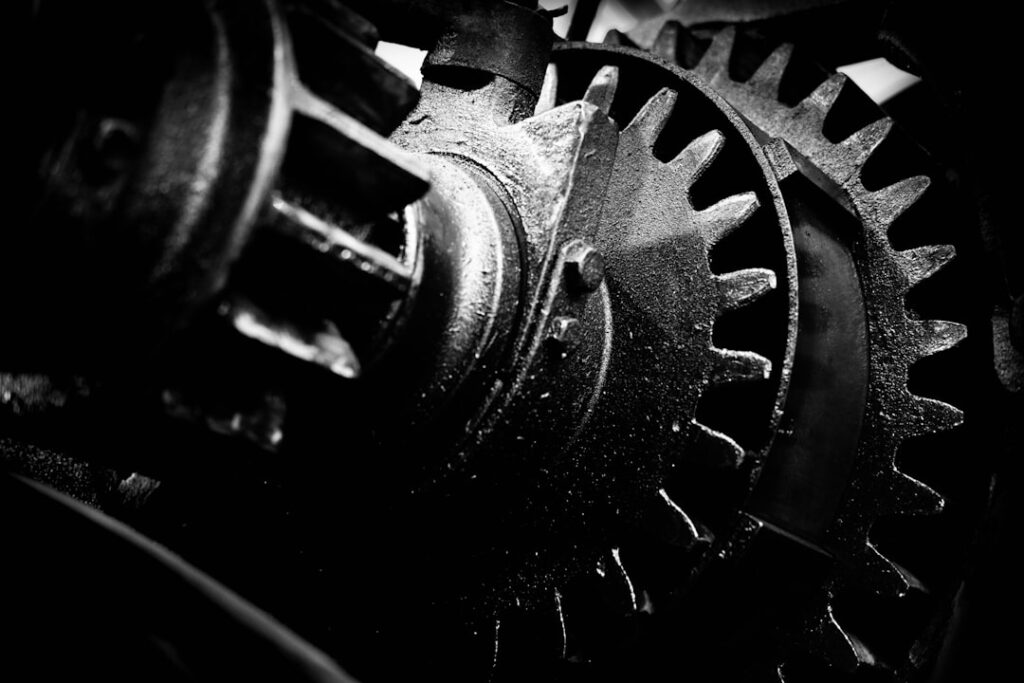Meta Description: Revolutionize your operations in 2024 with our Ultimate Guide to AI-Powered Predictive Maintenance, covering strategies, applications, and best practices.
Introduction
In today’s rapidly evolving industrial landscape, maintaining the efficiency and reliability of equipment is paramount. Traditional maintenance strategies often fall short, leading to unexpected downtimes and escalating costs. Enter AI-powered predictive maintenance—a transformative approach that leverages artificial intelligence to foresee equipment failures and optimize maintenance schedules. This guide delves into the intricacies of predictive maintenance implementation, offering a comprehensive roadmap to help your organization achieve operational excellence in 2024.
Understanding AI-Powered Predictive Maintenance
Predictive maintenance (PdM) is a proactive maintenance strategy that anticipates equipment failures before they occur, utilizing data analytics and AI technologies. Unlike reactive maintenance, which addresses issues post-failure, or preventive maintenance, which relies on fixed schedules, predictive maintenance adapts to the actual condition of equipment, ensuring timely interventions.
Key Concepts of Predictive Maintenance
- Data Collection: Gathering data from sensors, historical records, and operational logs.
- Data Analysis: Using statistical methods and machine learning algorithms to identify patterns and predict failures.
- Condition Monitoring: Continuously assessing the health of equipment to detect anomalies.
- Maintenance Scheduling: Planning maintenance activities based on predictive insights rather than fixed intervals.
Benefits of AI-Driven Predictive Maintenance
Implementing AI-powered predictive maintenance offers numerous advantages:
- Reduced Downtime: Anticipating failures allows for timely maintenance, minimizing unplanned downtimes.
- Cost Savings: Addressing issues before they escalate reduces repair costs and extends equipment lifespan.
- Enhanced Safety: Preventing equipment failures lowers the risk of accidents and ensures a safer work environment.
- Improved Efficiency: Optimizing maintenance schedules enhances overall operational efficiency.
- Data-Driven Decision Making: Leveraging real-time data insights supports informed decision-making processes.
Steps to Implement Predictive Maintenance with AI
Implementing predictive maintenance requires a structured approach. Here’s a step-by-step guide to ensure successful predictive maintenance implementation:
1. Assessment and Planning
Evaluate Business Needs and Current Practices
Begin by understanding your organization’s objectives for predictive maintenance implementation. Identify key goals such as reducing downtime, lowering maintenance costs, and improving equipment reliability. Conduct a thorough assessment of your current maintenance strategies to pinpoint areas that require improvement.
Engage Stakeholders
Involve maintenance teams, operators, and management to gather insights on existing pain points and potential improvements. Align the predictive maintenance goals with overall business objectives to ensure organizational buy-in and support.
Identify Critical Assets
Determine which equipment is vital to operations and has the highest failure rates. Prioritize these assets for predictive maintenance to maximize impact and return on investment.
2. Technology Selection and Infrastructure Setup
Choose the Right IoT Sensors and AI Platforms
Select IoT sensors that accurately monitor equipment parameters and integrate seamlessly with your existing systems. Additionally, choose AI platforms that offer robust data processing capabilities, scalable architecture, and support for advanced machine learning algorithms.
Set Up Infrastructure
Ensure that your IT infrastructure can handle the increased data flow and processing requirements. This may involve upgrading hardware, enhancing network capabilities, and implementing secure data storage solutions.
3. AI Model Development and Deployment
Data Collection and Preprocessing
Gather historical and real-time data from your equipment. Clean and preprocess the data to ensure accuracy and relevance for training AI models.
Develop Machine Learning Models
Choose appropriate machine learning algorithms based on your data characteristics and predictive maintenance goals. Train the models using historical data to identify patterns and predict potential failures.
Deploy and Monitor Models
Implement the AI models in a production environment. Continuously monitor their performance and make necessary adjustments to enhance accuracy and reliability.
4. Continuous Improvement and Scaling AI Solutions
Establish Feedback Loops
Create mechanisms for continuous feedback from maintenance teams and operational data to refine AI models. This iterative process ensures that predictive maintenance strategies remain effective and up-to-date.
Scale Across Operations
Expand predictive maintenance applications across multiple facilities and equipment. Ensure scalability by leveraging cloud-based solutions and robust data management practices.
Foster Cross-Functional Collaboration
Promote collaboration between IT, operations, and maintenance teams to enhance problem-solving capabilities and drive innovation in maintenance practices.
Real-World Applications in Manufacturing
Manufacturing industries stand to gain significantly from AI-powered predictive maintenance. Here are some practical use cases:
Optimizing Production Lines
AI models analyze data from production machinery to predict failures, enabling timely maintenance and minimizing downtime. This optimizes production schedules and enhances overall efficiency.
Reducing Waste
By forecasting equipment performance, manufacturers can adjust operations to prevent overuse or underutilization of machinery, thereby reducing material waste and energy consumption.
Enhancing Supply Chain Management
Predictive maintenance insights help manage supply chains more effectively by ensuring that all equipment remains operational, preventing delays and ensuring timely product delivery.
Overcoming Challenges in Predictive Maintenance Implementation
While the benefits are substantial, implementing predictive maintenance comes with its own set of challenges. Here’s how to address them:
Identifying Common Barriers
- Lack of Skilled Workforce: Invest in training programs or hire experts in AI and data analytics.
- Data Silos: Integrate data from various sources to ensure a comprehensive view of equipment health.
- High Initial Costs: Start with a pilot project to demonstrate value before full-scale implementation.
- Resistance to Change: Implement change management strategies to foster a culture open to new technologies.
- Insufficient Data: Ensure robust data collection mechanisms are in place to gather sufficient and high-quality data.
Ensuring Data Quality and Security
- Data Governance: Establish clear policies for data management, including collection, storage, and usage.
- Data Cleaning: Regularly clean and preprocess data to maintain its integrity and reliability.
- Security Measures: Implement strong security protocols to protect sensitive data from breaches and unauthorized access.
Building Cross-Functional Teams
Create teams that include engineers, data analysts, operations managers, and IT specialists. This diversity fosters comprehensive problem-solving and ensures that both technical and operational perspectives are considered.
Measuring the Impact of AI-Powered Predictive Maintenance
Quantifying the success of predictive maintenance initiatives is crucial for demonstrating ROI and guiding future strategies.
Key Performance Indicators (KPIs)
- Equipment Uptime: Measure the percentage of time equipment is operational and available.
- Maintenance Costs: Track savings achieved through reduced downtime and optimized maintenance schedules.
- Mean Time to Repair (MTTR): Monitor the average time taken to repair equipment after a failure.
- Return on Investment (ROI): Calculate the financial benefits relative to the costs of implementing predictive maintenance.
Case Studies and Success Stories
Numerous organizations have reported up to a 30% reduction in maintenance costs and significant improvements in operational efficiency after adopting AI-powered predictive maintenance solutions.
Future Trends in AI-Powered Predictive Maintenance
The landscape of predictive maintenance is continually evolving, driven by technological advancements and changing industry needs. Here are some future trends to watch:
Increased Use of IoT Devices
The proliferation of IoT sensors will enhance real-time data collection, providing more granular insights into equipment performance and enabling more accurate predictions.
Advanced Analytics and Machine Learning
Machine learning algorithms will become more sophisticated, allowing for better pattern recognition and anomaly detection, further enhancing predictive capabilities.
Integration with Augmented Reality (AR)
AR tools will aid technicians by overlaying digital information onto physical equipment, improving maintenance accuracy and efficiency.
Cloud Computing and Big Data
Cloud platforms will facilitate the storage and analysis of vast amounts of data, enabling more comprehensive and scalable predictive maintenance solutions.
Focus on Sustainability
Predictive maintenance will increasingly align with sustainability goals, helping organizations reduce waste and energy consumption by optimizing maintenance schedules and extending equipment lifespan.
Conclusion
AI-powered predictive maintenance is revolutionizing the way organizations manage their assets, offering significant benefits in terms of cost savings, operational efficiency, and equipment reliability. By following a structured implementation strategy and leveraging advanced AI technologies, businesses can transform their maintenance practices and achieve sustained operational excellence.
Ready to Transform Your Maintenance Operations?
Revolutionize your maintenance strategy with AI-powered predictive maintenance solutions. Visit iMaintain UK to learn how we can help you achieve operational excellence through enhanced efficiency and reduced downtime.






